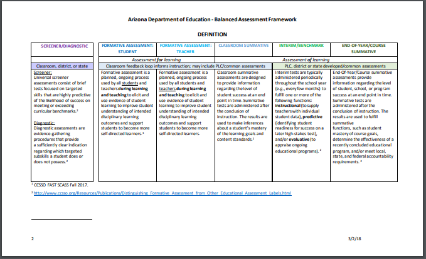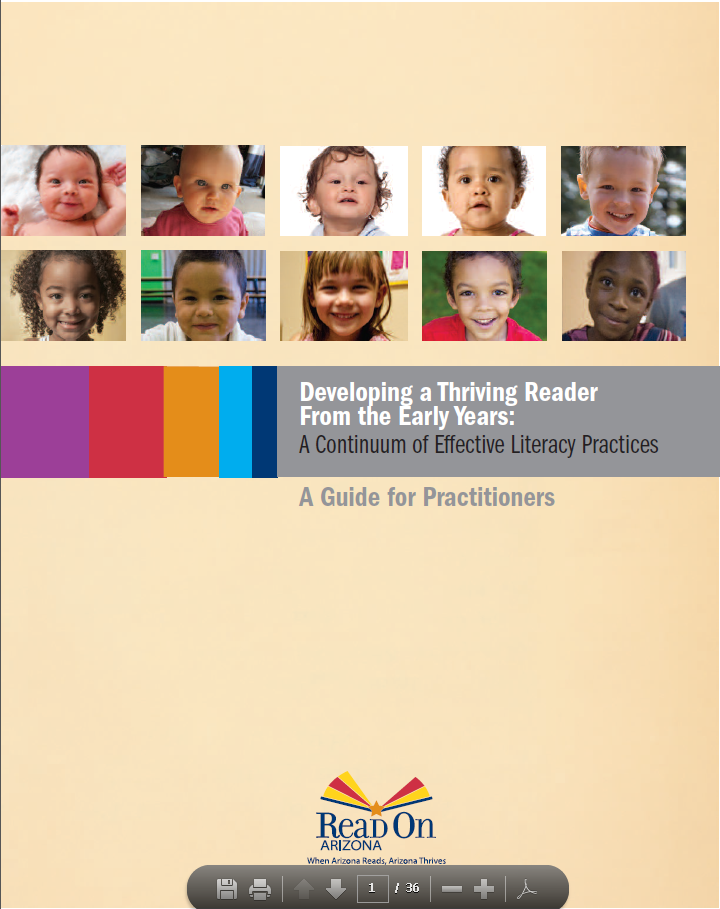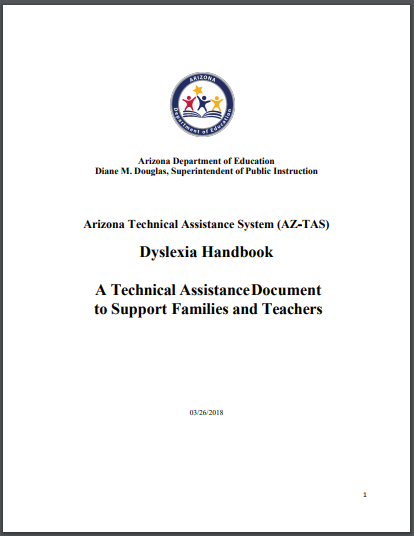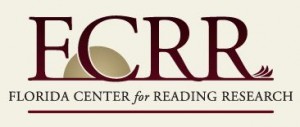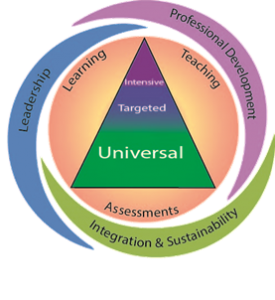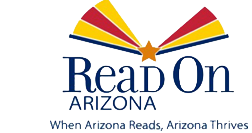Administrators
Administrators
Each school literacy plan reports the K-3 literacy efforts to be implemented in the coming school year. Per A.R.S 15-704, schools report the K-3 evidence-based core and intervention reading programs, comprehensive assessment systems, professional development, as well as copies of each grade’s ELA block schedule, required parent notifications, and MOWR allocation spending. Find helpful documents in each tab below to assist you in the MOWR Literacy Plan submission process, as well as your system-wide literacy processes.
Attention as of 7/2024: The MOWR Vetted Core Reading List has been updated to reflect the SY23-24 review. All programs in green provide efficacy studies that meet ESSA Tiers I, II, or III for evidence.
Attention as of 11/2024: As part of the regular review process and due to legislative updates, all reading intervention programs in grey will be under review during the 2024-2025 school year to ensure they meet current MOWR legislative requirements. Beginning in the winter of 2025, the MOWR curriculum committee will accept new submissions to the approved list. All reviews of new intervention programs will occur during the 2024-2025 school year.
K-3 Literacy Plan Checklist: Approval criteria for each component of the literacy plan.
Essential Components of a Literacy Plan: Two-page info-sheet covering all essential components of a literacy plan; core and intervention systems, assessment plan, professional development, parent notifications, and reading schedules.
School and District/Charter Responsibilities List of the key responsibilities of MOWR school-level and LEA-level approvers.
It is the responsibility of schools to select curriculum and instructional materials that they feel best meet the needs of their student population.
However, A.R.S. 15-704 requires all public schools that serve any K-3 students to adopt a core instructional curriculum that meets the following select criteria:
- Aligned to standards
- Address the essential components of reading
- ESSA is evidence-based at one of the top three tiers
Vendors used across the state submitted information (in the table below), which may or may not meet the legislative criteria and listed requirements.
- Programs in green meet all criteria. - All previously green programs are now in grey and under review - see the bolded note above
- Programs in yellow meet some criteria and may be under current additional review.
- Note that there are new programs currently performing an efficacy study.
- Programs in red do not currently meet legislation and should not be adopted for core use with K-3 students in Arizona. If an LEA chooses to use a reading curriculum that is not on the vetted list provided by the Arizona Department of Education, then the LEA will receive "conditional approval" on their Literacy Plan for that school year. If an LEA has "conditional approval" of their literacy plan for two consecutive school years and continues to use a reading curriculum that is not on the vetted list provided by the Arizona Department of Education, then the literacy plan will be "rejected" upon submission during the third consecutive year and the LEA will not receive MOWR funds that school year.
Supplemental Programs List - These programs have been labeled “Supplemental” by the vendor. They are to be used in conjunction with a Tier 1 program to enhance areas of the core curriculum. These are not marketed as stand-alone programs for targeted Tier 2/3 intervention, and other choices may be more impactful.
It is the responsibility of each school’s leadership and literacy team to ensure curriculum in use continues to meet the highest standards. It is the goal of the Arizona Department of Education and the Move On When Reading team to assist LEAs in the decision-making process for all curricular materials.
Understanding ESSA evidence provisions and MOWR legislation is an important step in the decision-making process. ADE requires that all programs qualify for one of the top three ESSA tiers of evidence and show a statistically significant positive effect on a relevant outcome. It is also important to consider the local context, especially the grade levels and demographics for which the studies’ student population was conducted, in determining if a program is the right fit for any LEA or school. Below are some resources that may help LEAs in the decision-making process.
- Understanding the ESSA Tiers of Evidence Video and Handout
- Reading a study
- Assessing the body of evidence for a particular intervention
- Evaluating evidence to align with current needs/wants/context
For more information on ESSA, open the blue ESSA tab below on this webpage.
Completing the Literacy Plan Core Reading Program:
As always, it is up to the schools to determine if the curriculum used in K-3 classrooms meets legislative requirements. To assist in this process, however, the MOWR team has reached out to vendors directly to request additional information that will be helpful for schools when making this determination. All information provided in the table is directly from the vendors and is reported as is. Programs by vendors currently completing their studies have not been added to the MOWR portal but may be added at any time once the criteria have been confirmed by the vendor.
When completing this year’s literacy plan, LEA approvers should select “*Core program under review or without established ESSA rating” and type current programs in the notes section at the aggregate district/charter level.
While ADE used the information provided by vendors to determine if they met the criteria, it is the responsibility of districts and charters to gather and review information to inform their decisions about what programs will meet their unique needs.
*Updated as of 5/15/2025
The information included in the chart has been gathered directly from vendors/publishers of core program materials. The Literacy Team at the Arizona Department of Education provides this information as a resource. Although only one study has been linked in the table, it is recommended that all additional studies available be reviewed, as well. LEAs must choose programs that meet their specific needs and must make certain those programs meet the criteria of the law (ARS 15-704: J1-3).
It is the responsibility of schools to select curriculum and instructional materials that they feel best meet the needs of their student population.
However, A.R.S. 15-704 requires all public schools that serve any K-3 students to adopt an intervention instructional curriculum that meets select criteria:
- ESSA is evidence-based at one of the top three tiers
Vendors used across the state submitted information (in the table below), which may or may not meet the legislative criteria and listed requirements.
- Programs in green meet all criteria.
- Programs in yellow meet some criteria and may be under current additional review.
- Note that there are new programs currently performing an efficacy study.
- Programs in red do not currently meet legislation and should not be adopted for use with K-3 students in Arizona.
It is the responsibility of each school’s leadership and literacy team to ensure intervention curriculum in use continues to meet the highest standards. It is the goal of the Arizona Department of Education and the Move On When Reading team to assist LEAs in the decision-making process for all curricular and intervention materials.
Understanding ESSA evidence provisions and MOWR legislation is an important step in the decision-making process. ADE requires that all programs qualify for one of the top three ESSA tiers of evidence and show a statistically significant positive effect on a relevant outcome. It is also important to consider the local context, especially the grade levels and demographics for which the studies’ student population was conducted, in determining if a program is the right fit for any LEA or school. Below are some resources that may help LEAs in the decision-making process.
- Understanding the ESSA Tiers of Evidence Video and Handout
- Reading a study
- Assessing the body of evidence for a particular intervention
- Evaluating evidence to align with current needs/wants/context
For more information on ESSA, open the blue ESSA tab below on this webpage.
Completing the Literacy Plan Intervention Programs:
As always, it is up to the schools to determine if the curriculum used in K-3 classrooms meets legislative requirements. To assist in this process, however, the MOWR team has reached out to vendors directly to request additional information that will be helpful for schools when making this determination. All information provided in the table is directly from the vendors and is reported as is. Programs by vendors currently completing their studies have not been added to the MOWR portal but may be added at any time once the criteria have been confirmed by the vendor.
When completing this year’s literacy plan, LEA approvers should select “*Tier 2/3 program under review or without established ESSA rating” and type current programs in the notes section at the aggregate district/charter level.
While ADE used the information provided by vendors to determine if they met the criteria, it is the responsibility of districts and charters to gather and review information to inform their decisions about what programs will meet their unique needs.
*Revised and republished 5/29/2025
The information included in the chart has been gathered directly from vendors/publishers of intervention materials. The Literacy Team at the Arizona Department of Education provides this information as a resource. Although only one study has been linked in the table, it is recommended that all additional studies available be reviewed, as well. LEAs must choose programs that meet their specific needs and must make certain those programs meet the criteria of the law (ARS 15-704: J1-3).
Intensive Intervention & Multi-Tiered System of Supports (MTSS) The National Center on Intensive Intervention (NCII) outlines intensive intervention and the MTSS process in which schools and districts can align their practices for Tier 1, Tier 2, and Tier 3 interventions. LEAs can glean information from the research study presented by the NCII and tailor its findings to their practices.
Core Curriculum
- Special Education reading curriculum must follow the MOWR requirements for evidence-based instruction, including meeting the Top 3 Tiers of Evidence for ESSA.
- Special education students may be given accommodations based on their disability indicated in their IEP.
ESS Accommodations for Core Curriculum
Universal Literacy and Dyslexia Screener
- Special Education students must also be assessed using the approved Universal Literacy and Dyslexia Screeners required for screening kindergarten through third grade students three times a year per A.R.S. §15-701 and A.R.S. §15-704.
- Special education students may be given accommodations based on their disability indicated in their IEP.
In 2015, the Every Student Succeeds Act replaced No Child Left Behind. ESSA empowers states to better identify and support the needs of their schools. Beginning in 2017-2018, the K-3 reading programs used by schools must meet the ESSA criteria for being evidence-based. To receive MOWR and any federal funding (Title 1, etc.), programs must meet one of the top three tiers of evidence (Strong, Moderate, or Promising).
Becoming an ESSA Investigator: A Webinar Series
Welcome/Introduction Video: Welcome to our ESSA Video Series
Video #1: Why ESSA In Arizona
Video #2: Overview of ESSA Evidence Levels | Materials from video: Handout 1 | Handout 2 | Handout 3 | Video
Video #3: Evidence-Based Improvement
Video #4: Using Clearinghouses | Links from video: Evidence for ESSA | What Works Clearinghouse | ERIC
Video #5: How to Read a Study | Materials from the video: Handout 1
Video #6: Exploring the Body of Evidence for a Selected Program
Video #7: Comparing Information
Video #8: Vetted Lists
Video #9: Looking Beyond Curriculum | Links from video: WWC Practice Guides | Connecticut Practice Guides
K-3 MOWR Assessment Requirements
A.R.S §15-704 (A.) requires each school district or charter school that provides instruction in K-3 to select and administer screening, ongoing diagnostic, and classroom-based instructional reading assessments, to monitor student progress. Each school shall use the diagnostic information to plan evidence-based, appropriate, and effective instruction and intervention. Learn more about the specific purpose and administration of each assessment type and how they apply to Move On When Reading. Click on the interactive document. Move On When Reading Assessment Requirements
Universal Literacy and Dyslexia Screener
Universal Literacy & Dyslexia Screener Guidance and Approved List
This comprehensive guide is intended to assist school and district leaders with the literacy MTSS process, including ADE's guidance on the use of literacy screening to include the screening for characteristics consistent with dyslexia.
During 2021-2022, schools are reviewing and selecting a screener from the Approved Universal Literacy and Dyslexia Screener list, with full implementation by July 1, 2022. This screening process meets both Move On When Reading and Dyslexia legislation, and will be the tool used to complete the MOWR Literacy Plan and assessment data submission for fall, winter, and spring.
English Learners will participate in this process alongside their native English-speaking peers. Schools should take extra care in reviewing the universal screener data for English Learners. Review these ADE recommendations.
Professional Development Guidance Per A.R.S §15-704 (D), all school districts and charter schools that offer instruction in kindergarten programs and grades one through three shall provide ongoing teacher training based on evidence-based reading research.
Literacy Plan PD Sample: Sample of brief narratives describing current year’s professional development plans for Tier 1 instruction, Tier 2/3 Interventions, Assessment, and Data Analysis
Dyslexia Training Designee Certificates
Each school literacy plan will include information for the one designated DTD on their campus for this school year. Certificates will be loaded into the portal for only one DTD.
Certificates must include:
- Title of training/course/module
- Name of the vendor/training organization
- Name of participant
- Date/s of the learning opportunity M/Year
- The specific focus area/s of the training/module: Understanding and Recognizing Dyslexia (URD), Instruction (I), and/or Intensifying Instruction (II)
- Number of clock hours completed
To ensure all DTDs are provided with relevant research, training must have been completed since 2018. Also, not all trainings before 2022 met all the Understanding and Recognizing Dyslexia (URD) RFI requirements. It is the responsibility of each school to ensure that its chosen training for the URD category includes all RFI requirements as determined at the time of approval. For all Reading Instruction and Intensifying Instruction trainings, DTD certificates must match the same version listed on the approved list.
Reading Block Schedules
At all times throughout any given K-3 school year, all children receive 90+ minutes (or 450+ minutes per week) of high-quality instruction from an ESSA evidence-based core reading program (Tier 1) in whole group and differentiated small groups. This core reading block is dedicated to reading standards. All schools submit their K-3 schedule directly within the literacy plan. The schedule should reflect Tier 1 minutes for each K-3 grade level served, including additional intervention periods outside the Tier 1 block.
For both the daily and weekly schedule, reading and language arts activities should be incorporated into other instructional areas, and rich content should be incorporated into reading and language arts. These decisions are made at the local level based on student needs.
DEFINING THE INSTRUCTIONAL CALENDAR
The purpose of these policies and procedures is to guide to all school districts and charter districts throughout the State of Arizona on the rules and regulations, including Arizona Revised Statutes (A.R.S.) which must be followed in the reporting of information to the School Finance Unit of the Arizona Department of Education (ADE). These include calendar requirements, minimum annual school days, scheduling limitations, and minimum instructional time. Visit the School Finance External Guidelines page for more information.
Parent Notification
School districts and charter schools must provide annual written notification to parents of students in grades K-3 informing them of Arizona's Move on When Reading laws.
Letter 1 is sent to all parents of students in grades K-3 upon entry and should include:
- Information about AZ's Move on When Reading law and third-grade retention policies
- Legislative exemptions to retention
Letter 2 is sent to parents of all K-3 students who have been identified as reading below grade level at the beginning of the year, middle of the year, and/or end of the year, Universal Literacy and Dyslexia Screener. All K-3 students are screened at least 3 times a year for potential reading difficulties.
This at-risk parent letter should include:
- Description of the student's current needs
- Description of the interventions available to remediate the reading deficiencies
- Legislative remedial strategies
- Parental strategies to support reading proficiency at home
- Notification about the promotion/retention legislation (MOWR)
At-risk Parent Letter - English (letter only)
English At-risk Parent Letter Strategies (Strategies only)
Spanish At-risk Parent Letter Strategies (Strategies only)
MOWR Budget
The LEA Literacy Plan requires each district to report the amount of funding received for K-3 literacy for the previous school year and to estimate the amount that will be received for the current school year. Please click on the link below to look up this information for your district/charter.
If you have any questions about K-3 reading funds, please contact [email protected] or 602-364-2262.
MOWR Allocations
Each year's previous and current school year's MOWR allocations are available to view on the MOWR Home Page. This information is only needed by the LEA Approver in the Final Requirements section of the aggregate literacy plan.
MOWR Funding 101
MOWR allocations are intended to improve reading proficiency for pupils in kindergarten programs and grades one, two, and three, with particular emphasis on pupils in kindergarten programs and grades one and two. Click on MOWR Funding 101 to see how these funds can and should be spent.
For commonly asked Move On When Reading questions, please see the appropriate category on our MOWR FAQs webpage.
There is information directly related to promotion and retention, statewide assessments, and summer school.
RESOURCES
| Resource Image | Resource Description |
|---|---|
| Balanced Assessment Framework: The Every Student Succeeds Act (ESSA) emphasizes the need for a balanced assessment system. The analysis of an assessment system begins with establishing common definitions and common understandings of the purpose of each different type of assessment. | |
| Developing a Thriving Reader From the Early Years: A Continuum of Effective Literacy Practices is a guide for practitioners provided by the Read On Arizona Organization. It can be a key piece to helping you write your literacy plan. All components in an effective literacy plan are described in this pamphlet. | |
| The Dyslexia Handbook is designed for teachers and administrators to help them recognize and address the struggles of students with dyslexia. Educators at all levels must have a deep understanding of reading to pinpoint gaps in student learning. This document also provides technical assistance to support families. | |
| The Florida Center for Reading Research (FCRR) is a multidisciplinary research center at Florida State University. FCRR explores all aspects of reading research—basic research into literacy-related skills for typically developing readers and those who struggle, studies of effective prevention and intervention, and psychometric work on formative assessment. | |
| In Arizona, Multi-Tiered System of Support (MTSS) is defined as an infrastructural system with a tiered infrastructure that uses data to help match academic and social-emotional supports to address the needs of the whole child. Within AZMTSS, instruction/intervention is delivered across multiple tiers depending on individual student needs as identified by student outcome data. | |
| Read On Arizona is a statewide, public/private partnership of agencies, philanthropic organizations, and community stakeholders committed to creating an effective continuum of services to improve language and literacy outcomes for Arizona’s children from birth through age eight over the next ten years. | |
| Reading Rockets is a website that provides articles, blogs, research, and strategies on teaching reading and helping struggling readers. |
**The views and opinions expressed in any third-party resource do not necessarily reflect those of the Arizona Department of Education (ADE) and do not imply an endorsement by ADE.
November/December 2021
Received by Sue Otto on behalf of Desert Heights Charter Schools
2021-22 Literacy Plan
Master Schedule – Desert Heights Charter School submitted its master schedule to include all levels of reading support, as well as all other content areas. This information is helpful to the ELA team during the review process.
BOY Data Narrative – Desert Heights took a truly reflective approach to include actionable steps they will immediately take based on the current data. The data narrative highlights not only what additional supports will be available at school, but also what will be available to parents for at-home support. It is very evident that this school is data-conscious and understands the implications of data-driven decision-making.
Posted with permission: December 8, 2021
October 2021
Received by Jamie Festa-Daigle, on behalf of Lake Havasu Unified District
2021-22 Literacy Plan Professional Development
Assessment PD: Teachers are provided 6 hours of training focused on building their assessment and data literacy to gather accurate information about student achievement. Teachers are taught how to use the district's balanced and comprehensive assessment system to provide data that guides instruction. They use Amplify along with DnA to collect summative and formative data about student progress. Our PD providers are Illuminate DnA, Amplify, and our awesome team of coaches and interventionists. We have five coaches this year (curriculum, assessment, technology, professional development, and math).
Data Analysis PD: Teachers are trained by interventionists to analyze data of individual students to identify specific skills to address through intensive reading interventions. Teachers are taught how to use multiple measures of summative and formative data to diagnose learning needs, provide descriptive feedback, and plan the next steps in instruction.
Posted with permission: October 20, 2021
January 2022
Received by Joslyn Maike on behalf of Mission Montessori Academy
2021-22 Literacy Plan Montessori Schedule
Schedule: Teaching a formal reading program in a Montessori classroom can be tough. We looked at student data and designed the approach around their needs. We created small groups, and we use the outdoor environment and partner pair activities. This makes the direct instruction fun and interactive. The results are proving successful. (written by Joslyn Maike, Head of Schools)
Posted with permission: January 28, 2022






